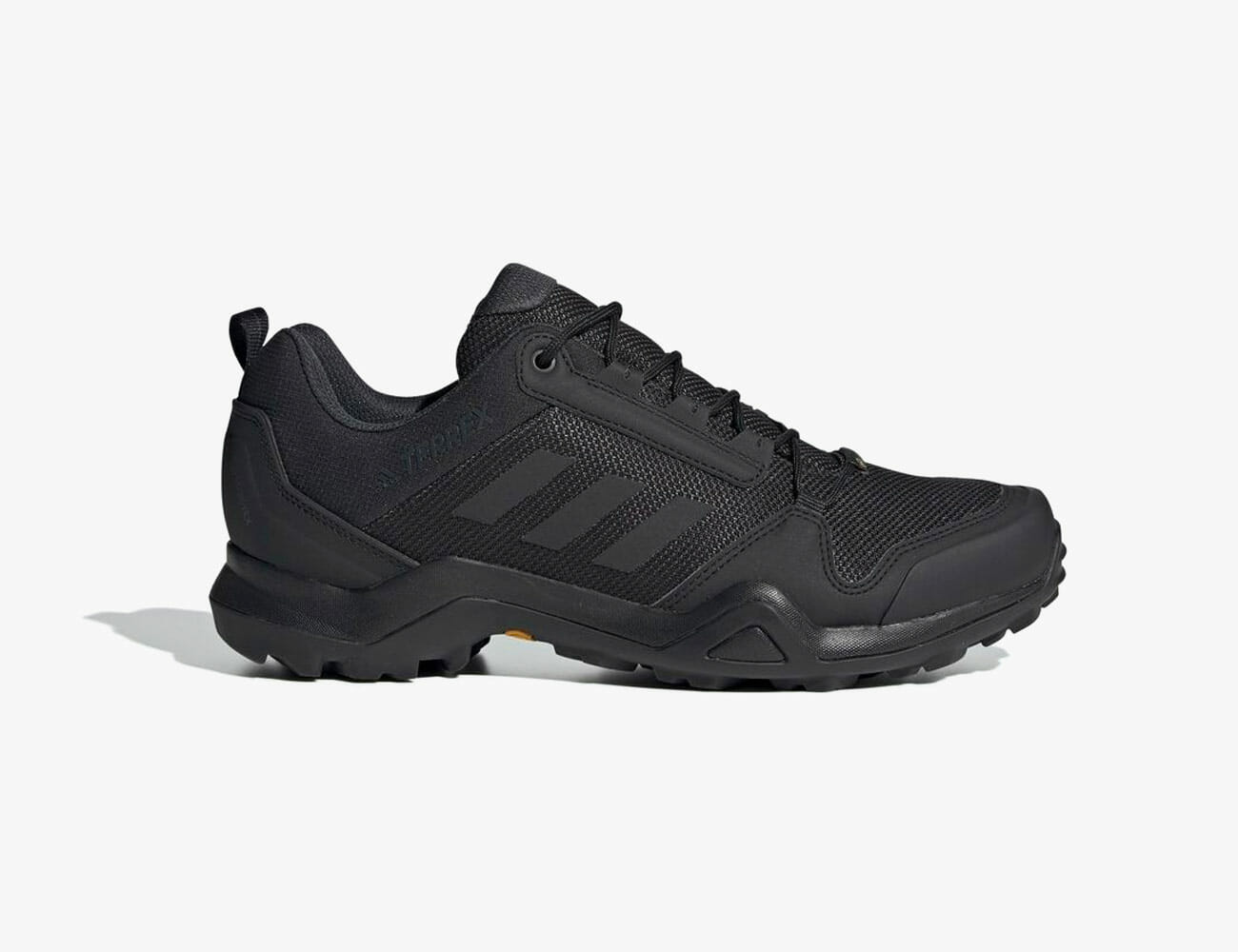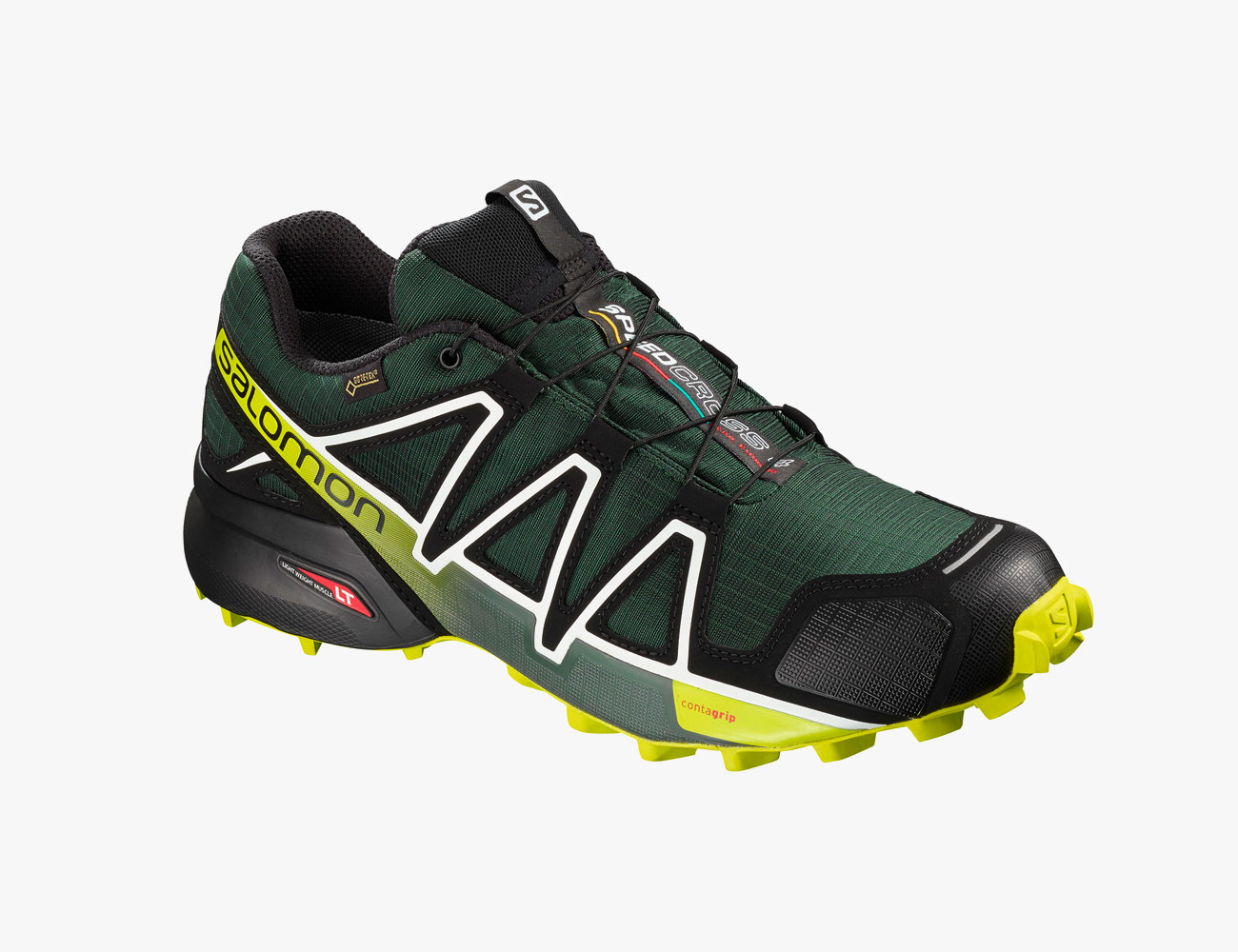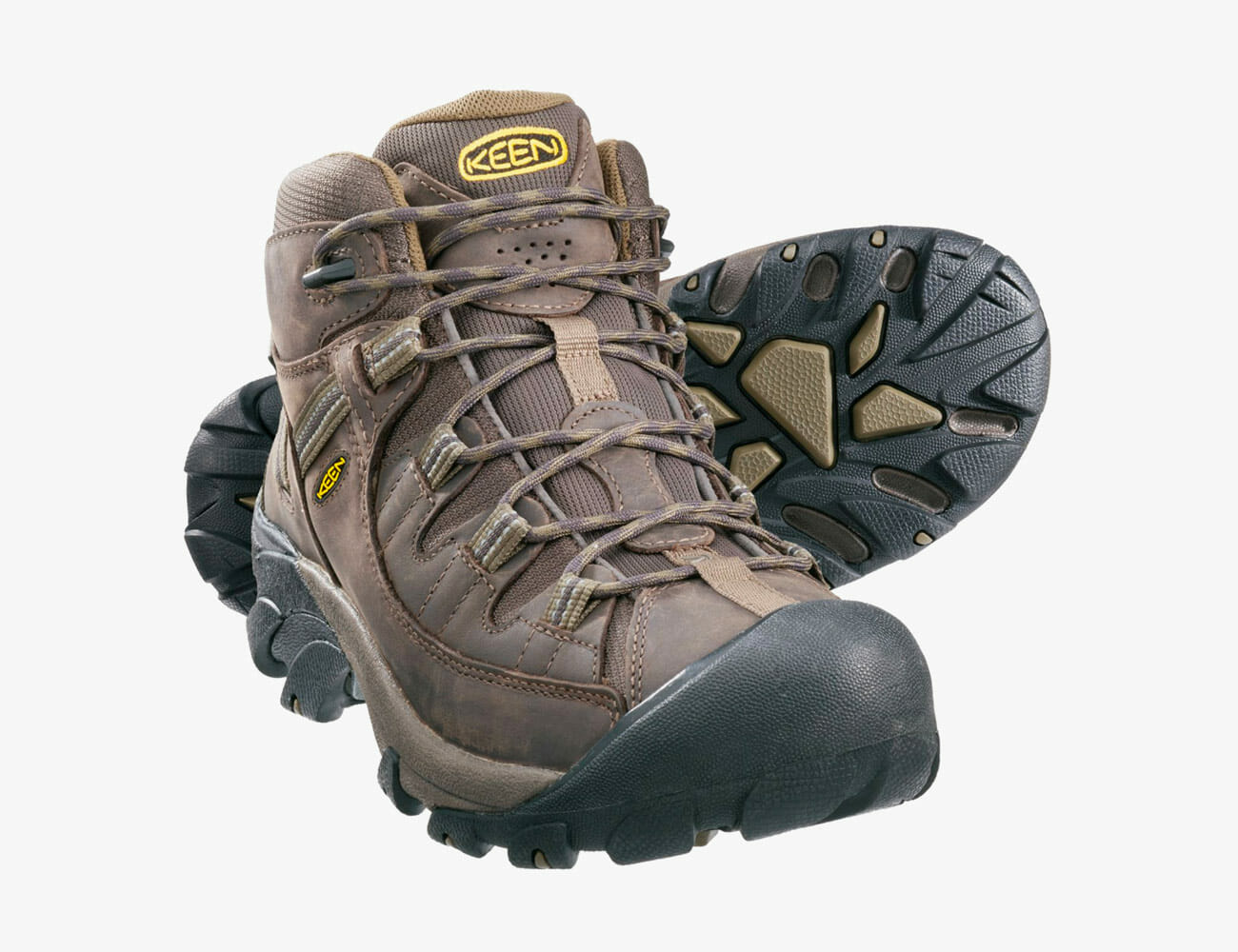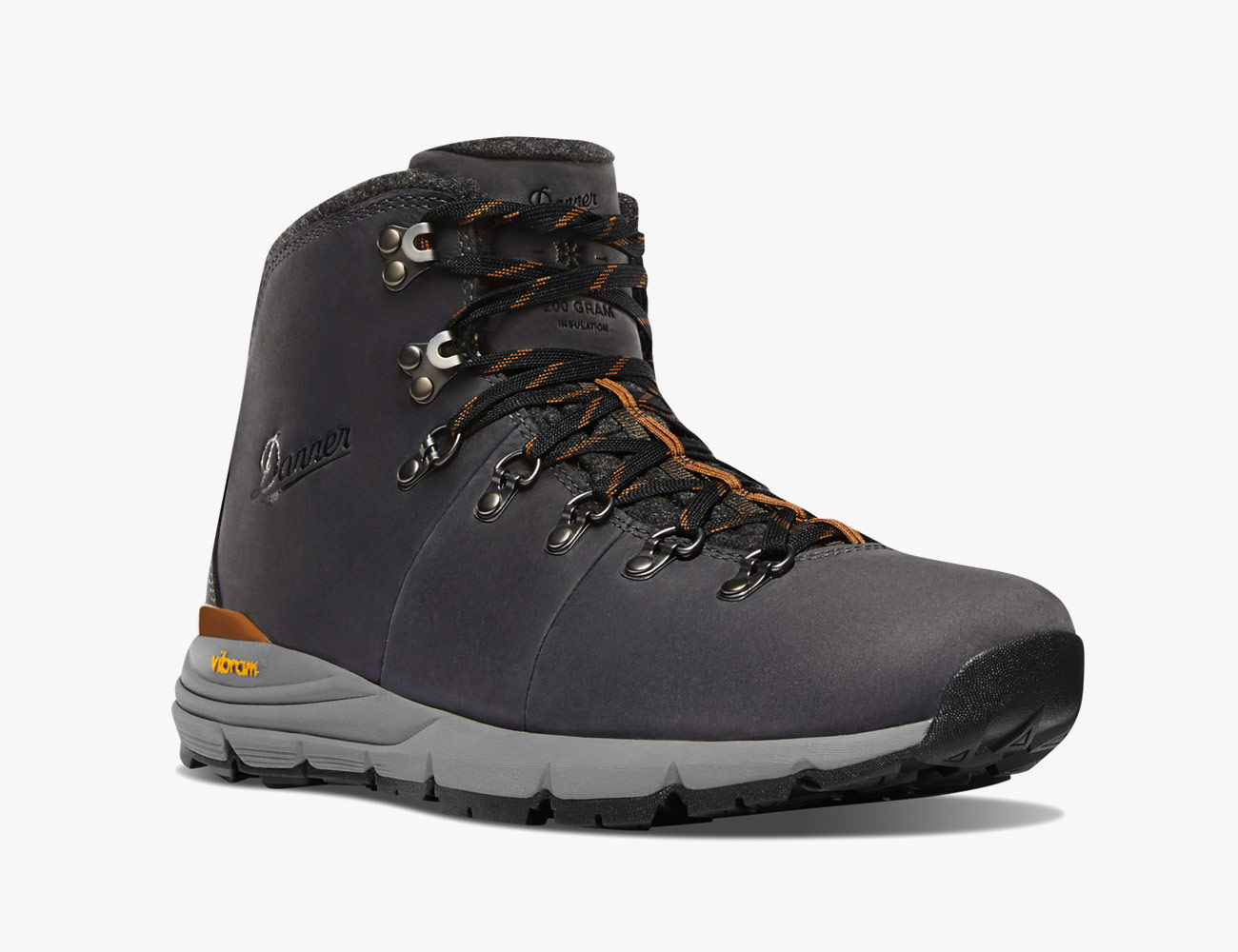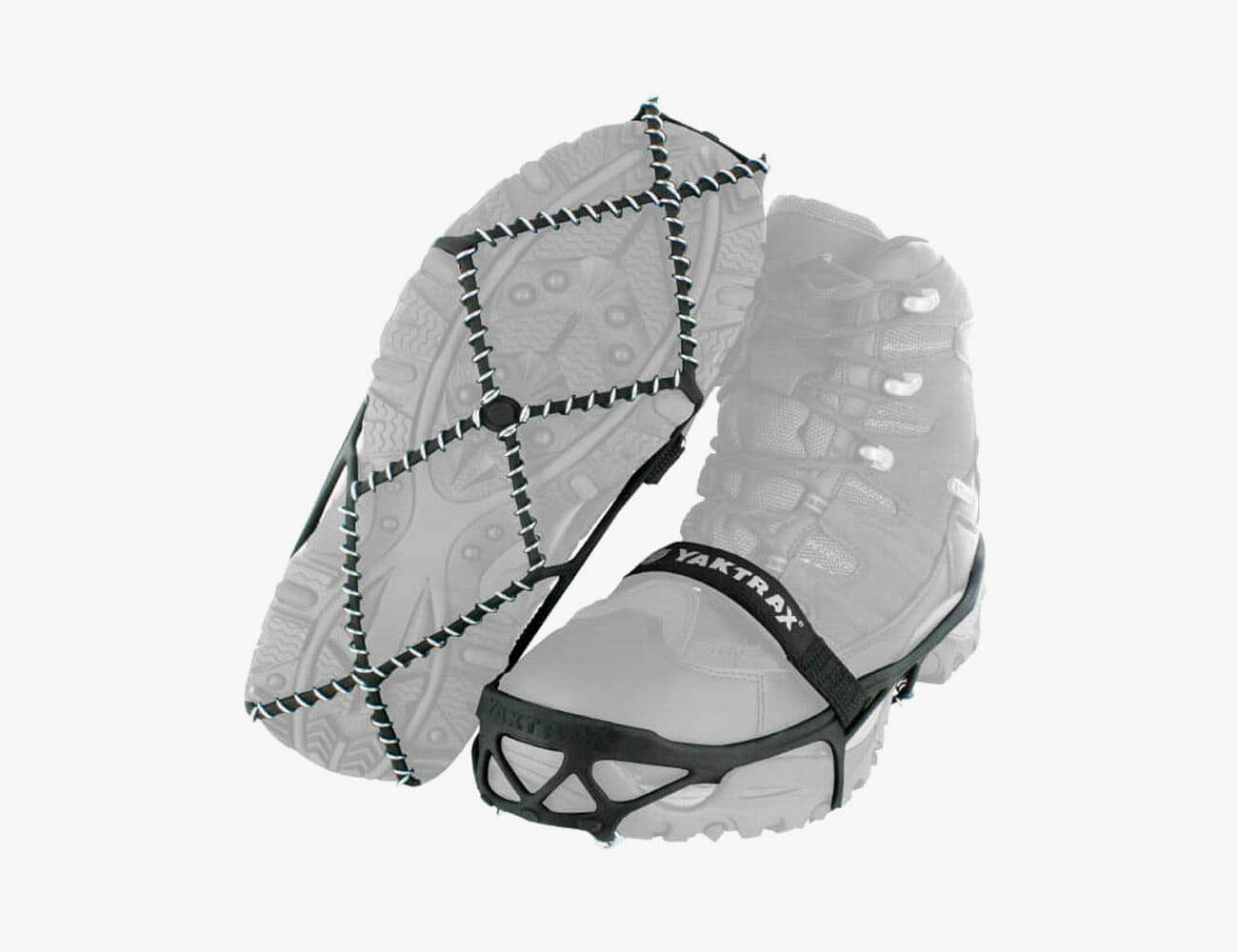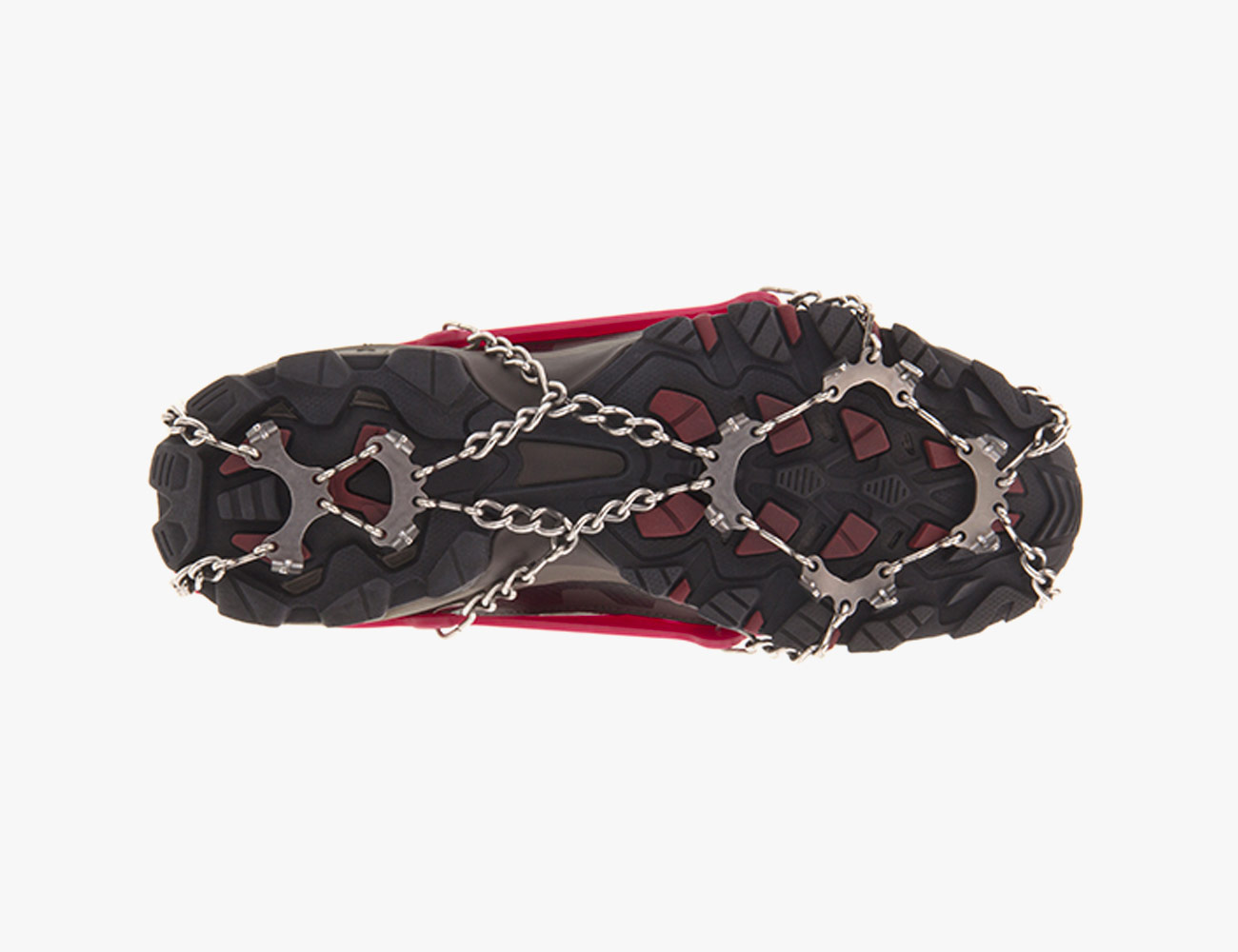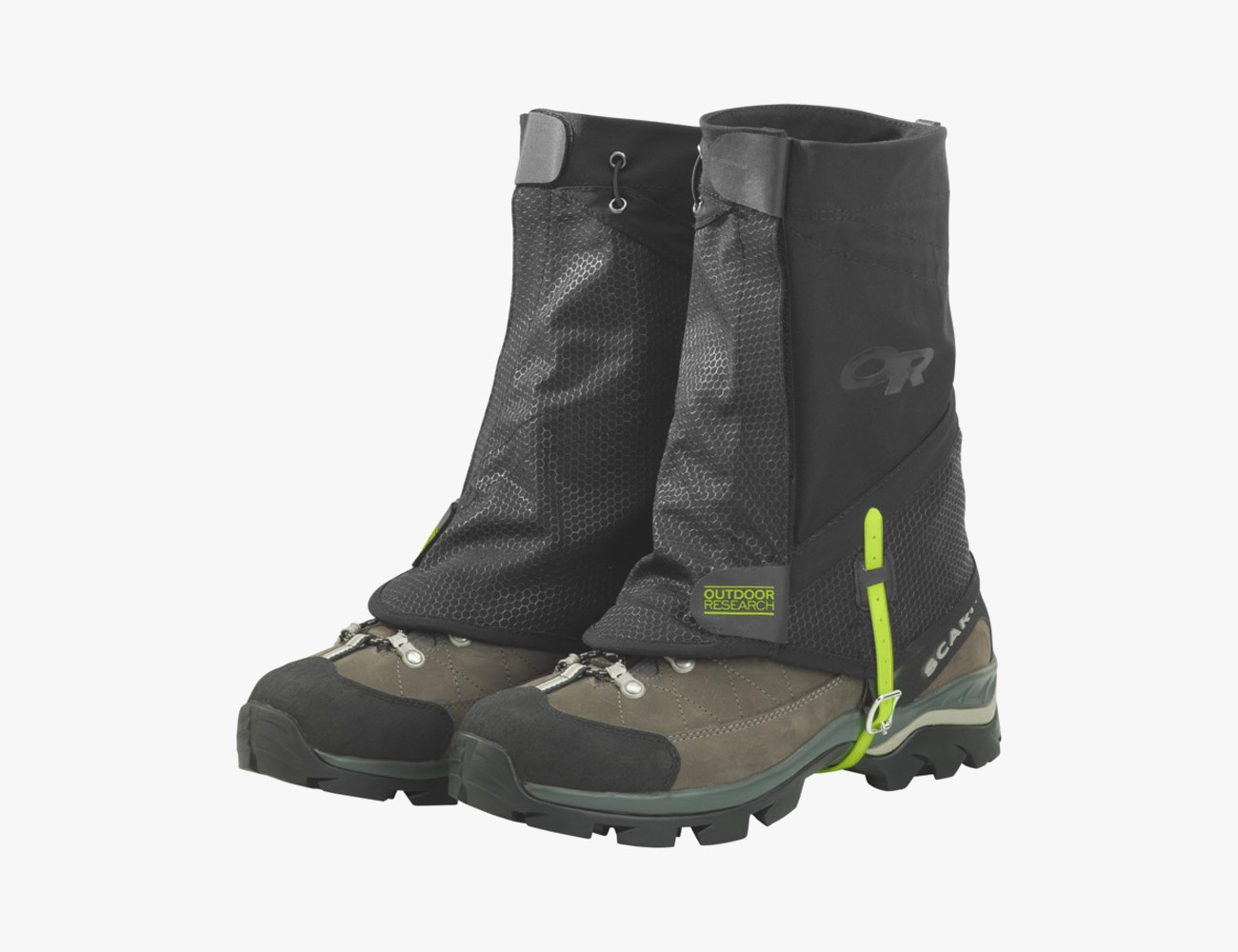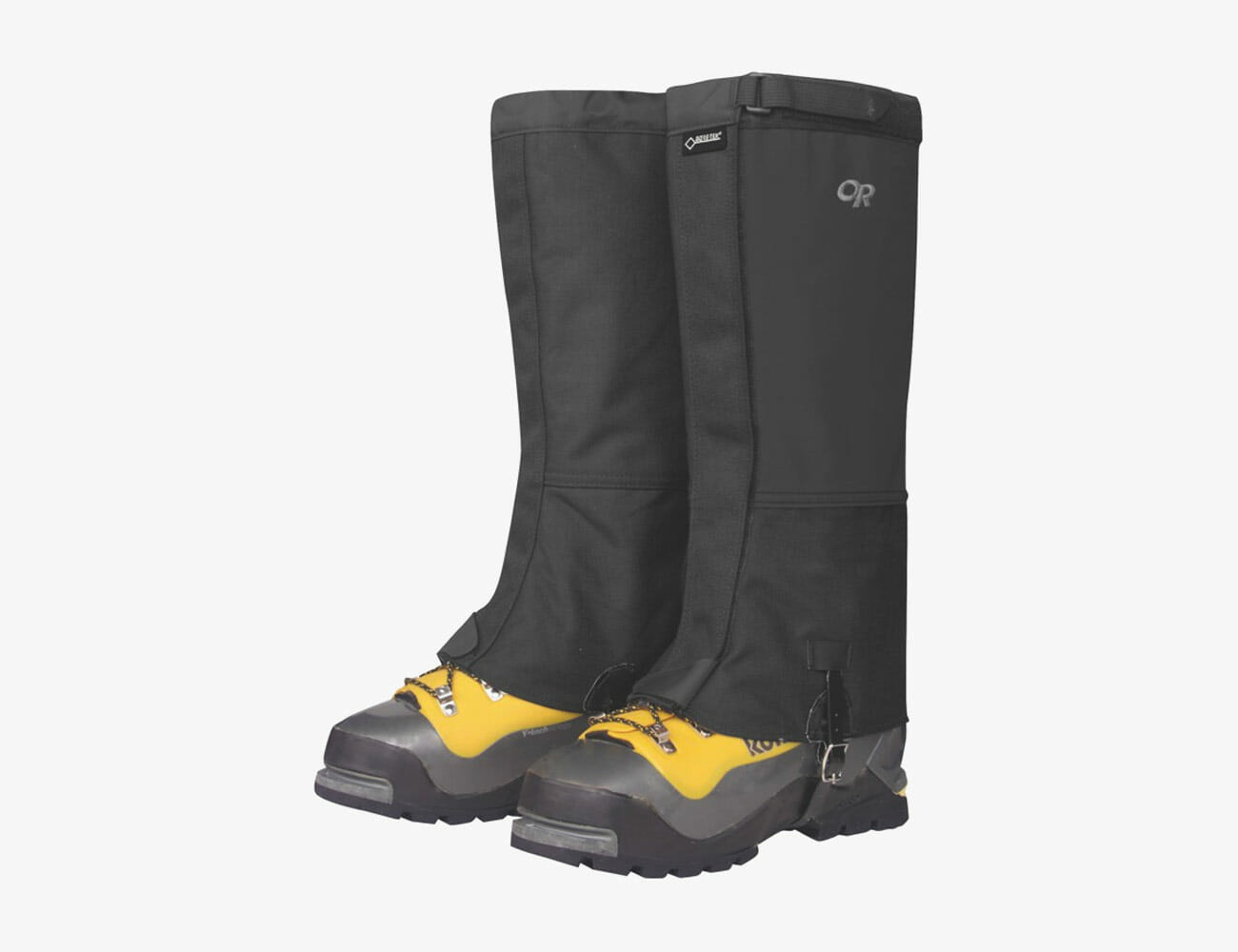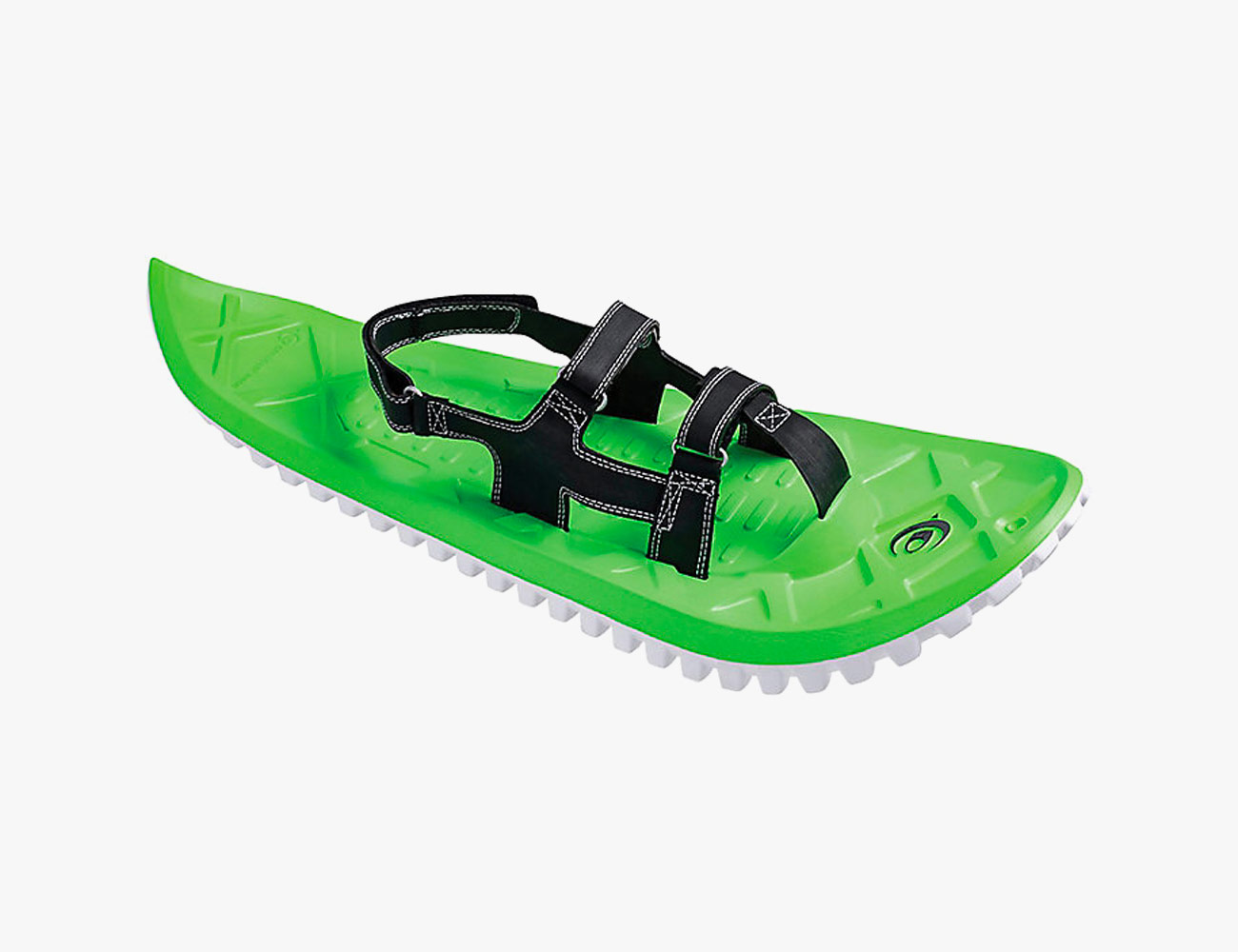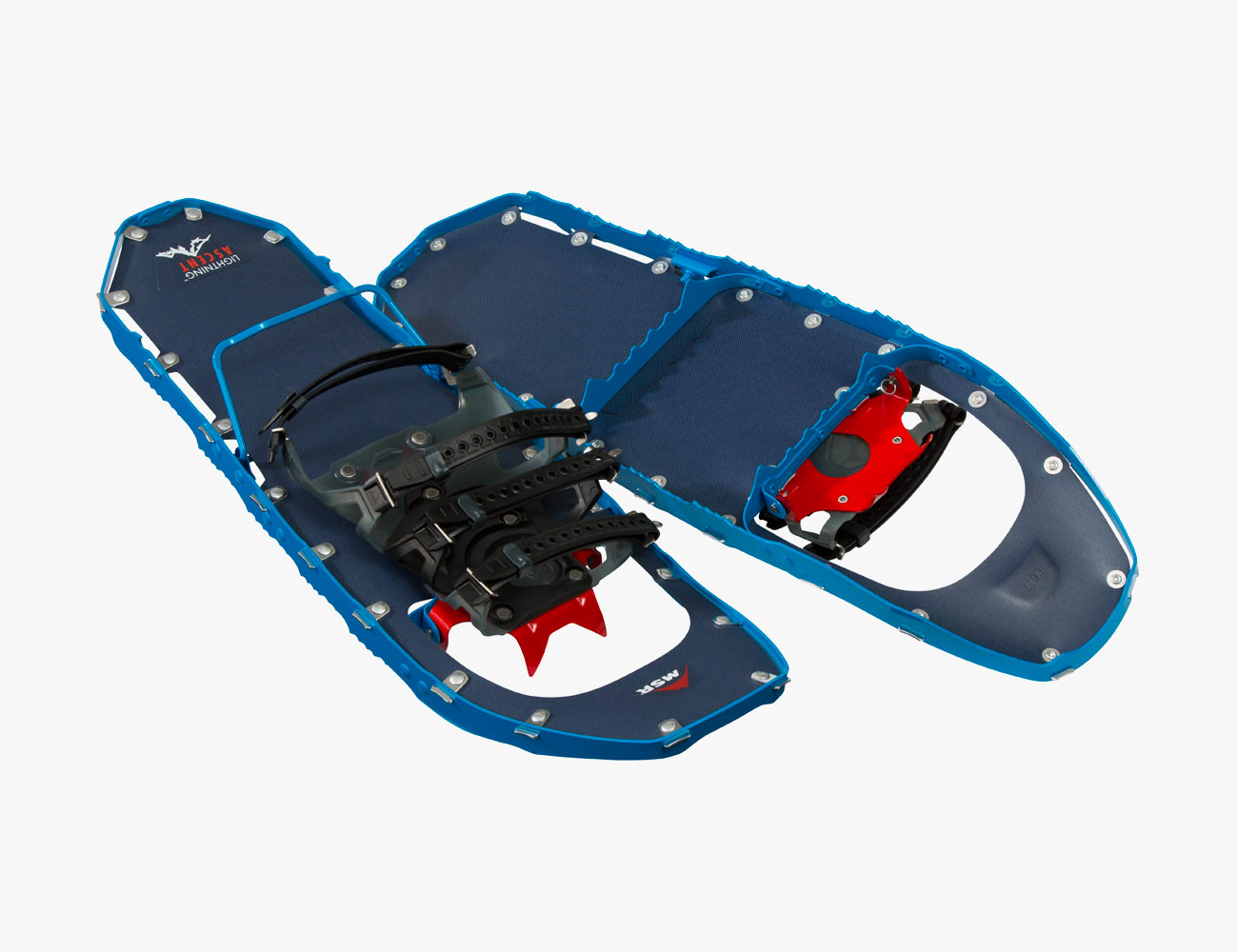Summer hikes are all sunny trails and summit picnics. In the winter, that same trek can be riddled with opportunities for freezing, slipping and post-holing in deep snow. But, getting outside in a season that usually has us hunkered down inside can feel liberating and downright serene. The secret to spending less time fighting the elements regardless of the season is the same: better gear.
In winter, gone is the freedom of sliding your gym shoes on if you forgot trail runners or boots or needing nothing more than ankle support on rocky terrain. Like every sport in winter, hiking requires more — more layers, more bulk, more must-haves like waterproofing and insulation and traction. But don’t let slippery conditions edge you off snowy trails. With the right gear underfoot — like insulated hiking boots, microspikes, and snowshoes — cold slush and thigh-high snow just become part of the scenery.
Here’s all the gear you need to hike through the worst of winter conditions.
Waterproof Trail Runners
Best For: Muddy trail runs and hikes, 45+ degree temperatures, packed snow, wet weather
Entry Level: Adidas Terrex AX3 GTX
Adidas’s Outdoor Terrex line is ideal for those who like to hike in trail runners but don’t want to deal with complicated lacing systems. When the snow is packed down on the trails, it’s safe to break out the AX3 GTX. Ideal for moderate temps, these light hikers are lined with a breathable Gore-Tex membrane for keeping moisture out and have a Continental (yes, the tire brand) rubber outsole, so feet will stay dry and feel secure on wet rocks and muddy trail — and they’ll run you roughly half the cost of most hiking boots.
The Upgrade: Salomon Speedcross 4 GTX
Salomon’s legendary trail runner will get you through the muddiest, wettest, sloppiest of trails without a worry. The beefy lugs tear through most winter terrain while the waterproof Gore-Tex exterior keeps your feet dry. The proprietary quicklace system means durable laces that will never untie and are easy to tighten mid-hike without having to take off your gloves. The Speedcross 4 GTX are the most versatile trail runner to handle a few inches of fresh snow or a trail riddled with mud holes.
Insulated Hiking Boots
Best For: Sub-45 degree temperatures, ankle-deep snow or less, wet and muddy trails
Entry Level: Keen Targhee Lace Boot
When the temperature drops and the terrain gets tough, you’ll be happy you laced up in these insulated hiking boots. Keen’s proprietary outsole and durable lugs keep you on solid footing over icy mountainsides while the waterproof, breathable membrane keep your feet dry — and they’re surprisingly comfortable compared to many other stiff competitors. Best yet, the synthetic insulation is warm but not bulky, so your boot feels no different from a warm-weather hiker until you realize it’s 10 degrees out and you can still feel your toes.
The Upgrade: Danner Mountain 600 Weatherized
These boots marry the best of Danner’s urban aesthetics with its commitment to trail performance, even on days when the weather hits single digits. The Mountain 600 have both a Vibram midsole and outsole, so the boots feel cushiony under foot and keep up your confidence on slippery snow and wet rocks. Most importantly, the Weatherized boots are completely waterproof and lined with Primaloft synthetic down, so your feet will stay not just dry, but straight up toasty.
Microspikes
Best For: Icy roads and trails, runs and hikes
Entry Level: Yaktrax Pro
Yaktrax are the easiest way to score better traction on slick roads and trails. Using coils instead of spikes mean you can leave these on when the icy trail turns into slippery pavement. Thanks to their patented skid lock system, there’s no compromising on grip. All Yaktrax models slip over trail runners or boots with ease, but opt for the Pro—it features a velcro strap over the midfoot to secure the basket better so it won’t fly off your foot, like some of the other models are known to do.
The Upgrade: Kahtoola Microspikes
When snow-packed and ice-covered trails turn steep, you’ll need a sharper grip. Kahtoola Microspikes are light enough to toss in your pack when you don’t know what trail conditions lie ahead and their 12 stainless steel spikes provide secure footing on glassy slopes. They’re easy to slide on mid-trail, will actually stay on your boots and won’t dull or break after just one season like cheaper brands.
Gaiters
Best For: Above-ankle snow, off-trail pursuits, downpours, hiking and trail running
Entry Level: Outdoor Research Flex-Tex II Gaiters
Made from a tough nylon-spandex blend, these calf gaiters are breathable, stretchy, durable and water-resistant enough to keep your lower leg toasty and shoes snow-free — all without too much bulk or constriction. OR’s unique wrap-around velcro design is low effort and simple to throw on. Once on, pull the drawstring at the top of the gaiter to tighten. Thanks to an ‘X’ design inside the gaiter, it will form to your calf so no snow, rocks, or mud can sneak in at the top or bottom openings. Because they’re adjustable in width, the gaiters work over a trail runner or bulky hiking boot as well as a thin pair of running tights or layered rain pants. Whether in snow or rain, these calf gaiters are a gift from the precipitation-loving Pacific Northwest gods.
The Upgrade: Outdoor Research Expedition Crocodile Gaiters
For super snowy hikes, you’ll want warm, knee-high coverage. Outdoor Research’s Crocodile gaiters have been best sellers for over a decade—and for a reason. Waterproof nylon and a triple layer of Gore-Tex line the gaiters so they’ll keep your pants dry during the most unfortunate of post-holing or sudden downpours. They’re durable enough to make it through thorns and around sharp edges. The biggest bump up though: They’re front entry — eons easier than step-in gaiters when the weather turns on you — and the locked-in velcro and top hook closure keep them water-tight.
Snowshoes
Best For: Groomed and off-trail snowy walks, full day hikes
Entry Level: Crescent Moon Eva V2
If you’re tired of post-holing on Sunday strolls but don’t want to have to deal with bulky snowshoes, Crescent Moon’s fuss-free design will win you over when you need more surface area underfoot to stay afloat. Made from foam instead of metal or plastic, the Eva V2 are incredibly light, which helps with leg fatigue and allows you to strap them to your pack without added weight. The Velcro straps are easy to use and they hold your boots in securely. While the Eva V2s won’t keep up on mountain climbs or deep, unbroken trail, Eva V2’s foam deck is quite durable on moderate inclines and flat terrain, and the rocker design has a springy feel, like a giant sneaker, so it’s easier to walk (or run) in than most snowshoes.
The Upgrade: MSR Lightning Ascent
If you want to be able to hike any mountain — no matter its steepness — in wintry conditions with just one set of snowshoes, it’s worth dropping the money for the MSR Lightning Ascents. The aluminum frame weighs a feathery four pounds, so you can move fast and conserve energy, while the wide frame and comfortable (albeit copious) straps will keep your feet happy and secure into double-digit mileage. The aggressive teeth underneath will lock you onto icy trails or steep inclines and an optional 5-inch modular tail add-on can deliver even more floatation in powdery, backcountry conditions.

